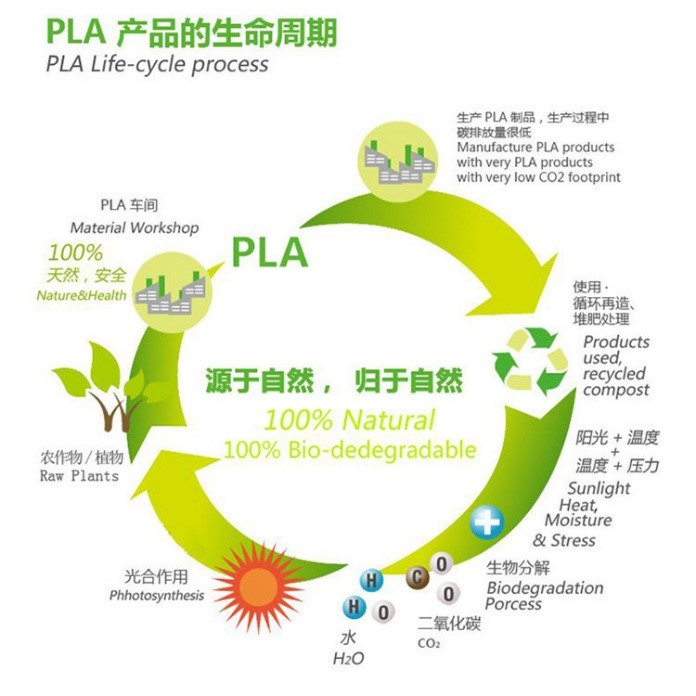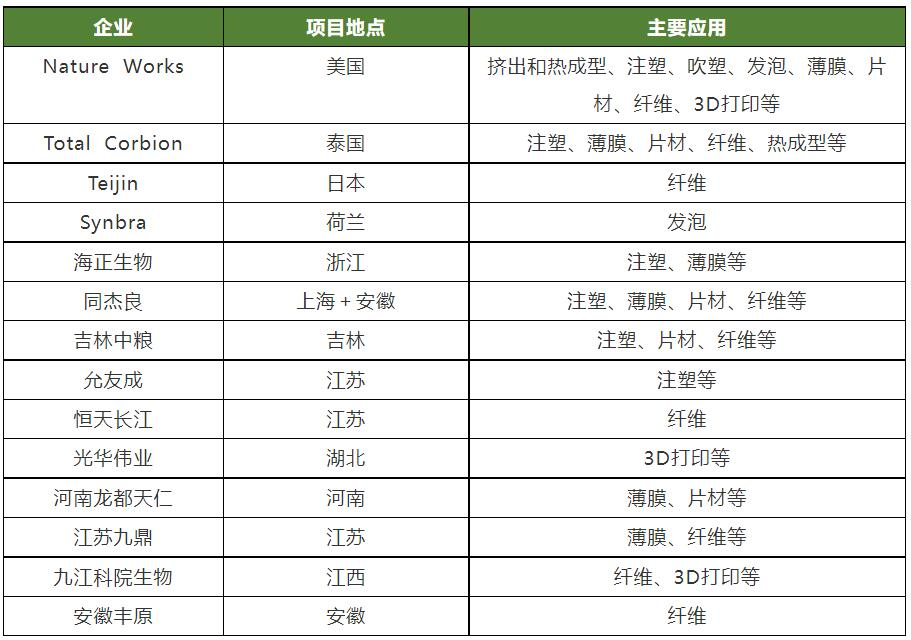PLA, also known as polypropylene tone, is a polyester polymer that is completely biodegradable.It is obtained from lactic acid condensation, at present mainly with starch containing food or straw cellulose as raw material, through fermentation, and then a cyclic dimeric propylene ester by lactic acid reaction.It is not oil, but uses renewable biomass from plant photosynthesis.Theoretically speaking, the waste materials of polylactic acid products can be decomposed into carbon dioxide and water by natural microorganisms, which can form biomass through plant photosynthesis, and continue to serve as raw materials for polylactic acid fermentation. Therefore, polylactic acid is internationally recognized as an environmentally friendly material.

Process flow
After melting PLA sheet, the molten PLA sheet is melted by high speed and high temperature airflow, so that the melt fine flow is overstretched to form ultra-fine staple fiber, then it is gathered on the roller or net curtain to form fiber network, and finally made into cloth by self-bonding action. The process flow is as follows: PLA slices → drying → screw extruder melting → filtering → metering pump → meltblown die head → melt fine stream stretching → fiber cooling → net laying reception → bonding into cloth → winding.
Performance Features
PLA meltblown nonwoven fabric has many features, summarized in three points as follows.
(1) Biodegradable, in line with the concept of sustainable development.
(2) Good weather resistance at room temperature and maintains good strength.
(3) Thanks to the meltblown technology, its fibers are very fine, porous and small in size, which has significant advantages in filtration, bacteria barrier and adsorption.
PLA raw material development and production capacity
In 1954, DuPont (DuPont) began to use the indirect method to prepare PLA, and the purified propyleneglycerides were then subjected to ring-opening polymerization to obtain large molecular weight PLA; in 2001, some foreign companies developed PLA for absorbable biomaterials, such as sutures, drug release system carriers, etc.; NatureWorks in the United States has commercialized PLA products. commercialized.
At this stage, the production of PLA in China is still in the initial stage. Before that, there have been technical barriers to PLA synthesis intermediate raw materials, and most of them rely on import. In recent years, some enterprises have broken through the technical bottleneck, and the production capacity of PLA fiber-grade slices has reached tens of thousands of tons. It is reported that PLA has been put into production at home and abroad, the proposed construction and proposed construction of nearly 20 enterprises, mainly concentrated in foreign countries, mainly in the United States NatureWorks, accounting for more than 30% of the global production capacity.

PLA hot meltblown nonwovens development status
Before that, universities and enterprises in China have researched and developed meltblown nonwoven process of PLA, but there has been no large-scale production. The reason is the high cost of raw materials and limited market acceptance, coupled with the use of traditional meltblown equipment for processing PLA, the production process is not mature enough. Especially for PLA meltblown fabric as high-grade filter media, there is a technical bottleneck in improving filtration efficiency. At present, many companies are exploring how to improve filtration efficiency and reduce filtration resistance through PLA modification (to maintain biodegradation), adding electret masterbatch and electret treatment of PLA meltblown cloth.
Along with the expansion of PLA raw material production scale in China, the improvement of process level and the reduction of production cost, the price of raw material has also dropped. Meltblown nonwoven fabric manufacturers to further segment the market, can target part of the green health products of high-end consumers, such as mother and baby products can be a step ahead; at the same time with the policy guidance and support, the whole society to form a consensus.
Comment(0)
You can comment after
SIGN IN